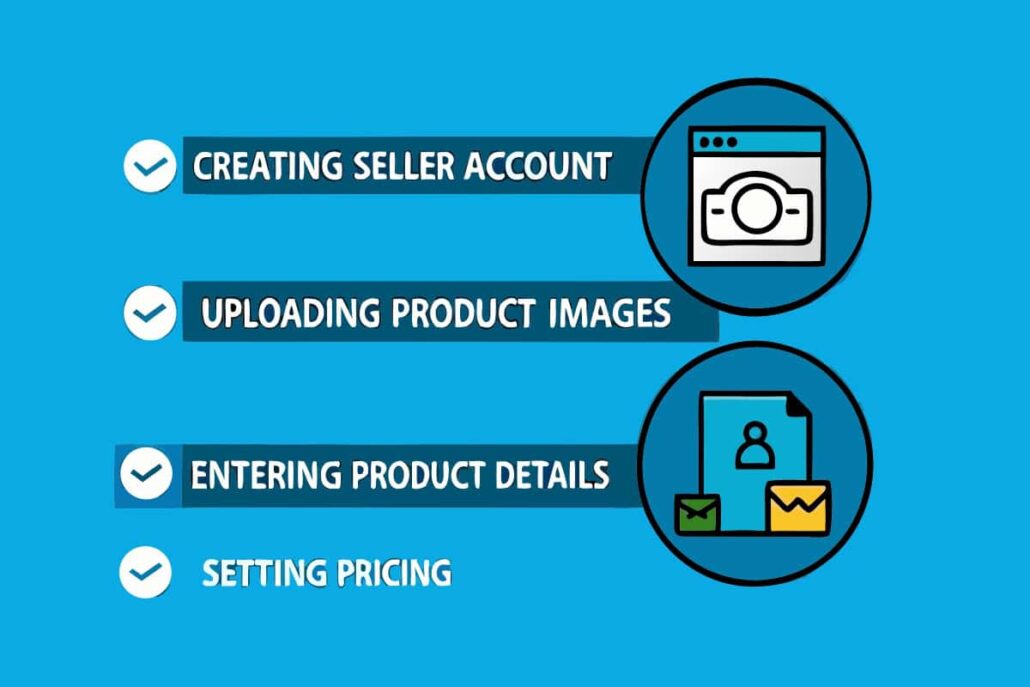
Amazon used to be just a place to buy books, but now it hosts over 300 million active shoppers from every corner of the globe. That huge audience can give new sellers a real chance to grow, so learning the right way to list products is often what separates big wins from being ignored.
How to List Products on Amazon
If you’re bringing your very first product online or adding to an already busy shop, this step-by-step guide will show you what to do. Well tackle everything, from setting up your seller account to tweaking your listing so it shows up in more search results. With these tips in hand, you’ll be ready to start selling and keep the momentum going.
Understanding Amazon’s Marketplace Structure
Before you jump into creating listings, it helps to know how Amazons marketplace is set up. At its core, Amazon offers two selling plans: Individual and Professional.
Individual vs. Professional Selling Plans
The Individual plan charges $0.99 for every item you sell, so it’s perfect if you expect to move fewer than 40 pieces a month. You still get basic tools and access to Amazons giant audience, but you miss out on bulk upload features, advanced reports, and pay-per-click ads.
The Professional plan is priced at $39.99 a month, no matter how many items you move. With this plan, you get advanced selling tools, access to Amazons ad service, and the power to list new products in categories off-limits to Individual sellers.
Because of the growth features it includes, most serious sellers quickly upgrade to the Professional plan and see it as the better long-term deal.
Setting Up Your Amazon Seller Account
Registration Process
Starting your seller account asks for a few important pieces of information:
Business Information
- Legal business name and address
- Tax identification number (EIN or SSN)
- Business type (individual, LLC, corporation, etc.)
Banking Details
- Valid bank account for payments
- Credit card for account verification and fees
Identity Verification
- Government-issued photo ID
- Bank account or credit card statements
- Utility bills or other address documents
Usually, Amazon finishes this verification in 24 to 48 hours, though it can take longer if they need extra paperwork.
Choosing Your Business Model
When it comes to getting orders to customers, Amazon gives you a few choices:
Fulfillment by Merchant (FBM)
With FBM, you store, pack, and ship the items yourself. This method offers greater control over every step but also demands more time and effort from you.
Fulfillment by Amazon (FBA)
With FBA, you ship your goods to Amazon’s warehouses, and they take care of packing, shipping, customer support, and returns. Because FBA items come with Prime shipping, many sellers notice a nice bump in sales.
Seller Fulfilled Prime (SFP)
If you choose SFP, you ship each order yourself but still get to show the Prime badge. To keep that badge, you have to stay within Amazons tricky performance rules.
Researching and Selecting Products
Market Research Fundamentals
Getting your product listing right starts with solid market research. Use Amazons search bar to find out:
- What top products pop up in your category
- Typical prices and how many sellers are in the game
- What buyers love, what they hate, and what they wish for
- When demand spikes seasonally or fades off
Product Criteria for Success
After the research, use these simple rules when picking items to sell:
Market Demand
Target products people search for and buy regularly. Tools like Jungle Scout or Helium 10 show you that action.
Competition Analysis
Check how many sellers are in the ring, what they charge, and how many reviews they have. Markets with only a few strong rivals often offer the best openings.
Profit Margins
Add up product cost, Amazon fees, shipping, and ads to make sure you keep a healthy cut on every sale.
Creating Your Product Listing
Product Research and ASIN Creation
When you sell an item already on Amazon, search for its ASIN (the unique code Amazon uses) before setting your offer. If your item is brand new, youll generate a fresh ASIN along with a complete product page from scratch.
Essential Listing Components
Product Title
Make your title simple, informative, and packed with the right words shoppers type. Amazon suggests this order:
Brand + Model + Product Type + Key Features + Size/Quantity
Product Images
Bright, clear photos can turn a curious visitor into a buyer. At minimum, provide:
- Main shot on plain white background
- Extra views from every angle
- Lifestyle images showing the product in action
- Infographics that call out important specs
Product Description and Bullet Points
Use short bullet points to spell out what the product does and why it matters. Spend the most space on features like durability, ease of use, or money saved.
Backend Keywords
In the hidden keyword box, drop in additional search phrases. This boosts visibility without crowding the public page.
Pricing Strategy
Before you set a price, check what similar products sell for. At the same time, keep an eye on these expenses:
- Manufacturing and sourcing costs
- Amazon fees (referral, FBA, and more)
- Shipping fees
- Profit goals
- How you want customers to see your brand
Optimizing Your Product Listings
Search Engine Optimization on Amazon
Amazon’s A9 algorithm looks at three main things:
- Relevance: Use keywords shoppers actually type. Tools like the Search Terms Report show which words pull traffic.
- Performance: Listings that sell well climb higher. Tweak titles, images, and bullet points to lift conversion rates.
- Customer Satisfaction: Good reviews and high ratings push you up. Great service and quality are a must.
Enhanced Brand Content
If your brand is registered, use EBC or A+ Content to:
- Add richer images and videos
- Write longer, clearer descriptions
- Tell your brand story
- Lift conversions
Managing Inventory and Fulfillment
Inventory Planning
Strong stock management stops lost sales or storage fees:
- Demand Forecasting: Look at past sales and trends to guess future need. Amazon’s FBA tools can help here.
- Reorder Points: Set alerts based on lead time and sales speed so you restock at the right moment.
Quality Control
Keeping your product quality high helps prevent bad reviews and costly returns.
- Set up a step-by-step quality check.
- Visit suppliers on a regular schedule.
- Keep a close eye on what customers say.
- Fix any quality problems as soon as they pop up.
Monitoring Performance and Analytics
Key Performance Indicators
Regularly tracking these numbers gives you a clear view of your business.
Sales Performance
- Total units sold
- Total revenue earned
- Conversion rate percentage
- Average order value per customer
Operational Metrics
- Speed of inventory turnover
- Percentage of returns
- Overall customer satisfaction score
- Advertising cost of sales (ACoS)
Using Amazon’s Analytics Tools
Amazon makes it easy to see how you are doing.
Business Reports
Log into your seller dashboard for sales, traffic, and customer info all in one place.
Brand Analytics
If your brand is registered, you’ll see deeper stats like search frequency and market basket data.
Common Mistakes to Avoid
Listing Optimization Errors
- Using low-quality images
- Keyword stuffing in titles
- Incomplete product information
- Ignoring customer questions and reviews
Operational Mistakes
- Poor inventory management leading to stockouts
- Inadequate customer service
- Neglecting competitor analysis
- Failing to optimize for mobile users
Compliance Issues
- Violating Amazon’s terms of service
- Inaccurate product information
- Improper categorization
- Intellectual property violations
Your Next Steps to Amazon Success
Listing products on Amazon successfully asks for thoughtful planning and a willingness to tweak things over time. Begin by digging into market research, looking at competitors, and then crafting clear, appealing listings that spotlight what makes your product special.
Think of success as a cycle. Check sales data, read customer feedback, and adjust your titles, photos, or prices when the market shifts. Many new sellers test the waters with just a few items, learning the ropes before growing a larger catalog.
Throughout the process, chase high-quality products, fair prices, and first-rate service. Over time, good reviews and solid seller ratings boost your visibility in Amazon search, bringing even more interested shoppers to your door.
The secret to lasting success on Amazon is simple: think marathon, not sprint. Spend time learning the platform, nurturing solid supplier partnerships, and setting up systems that grow with you.

